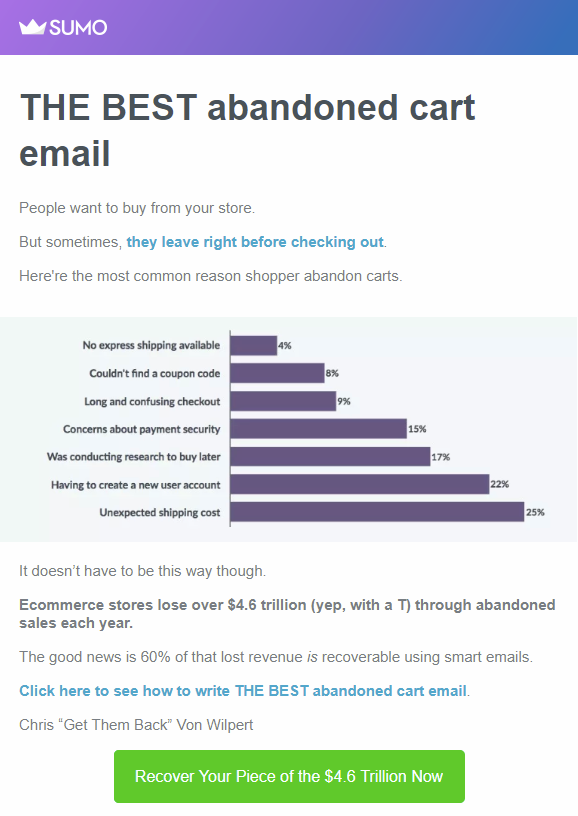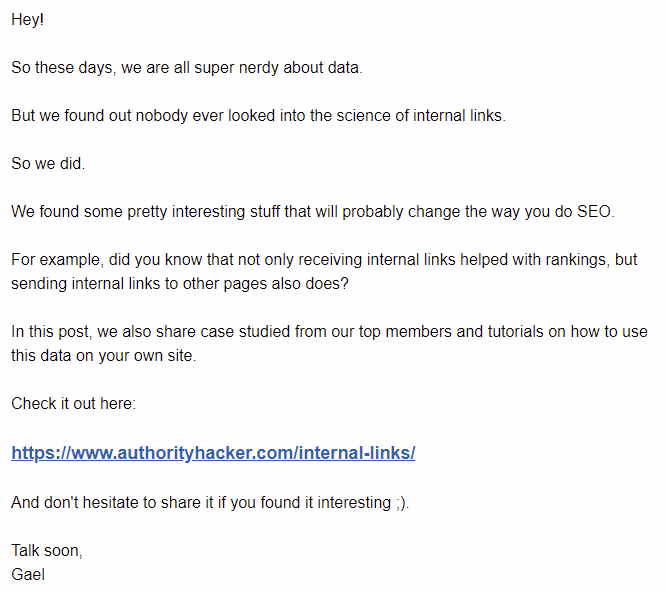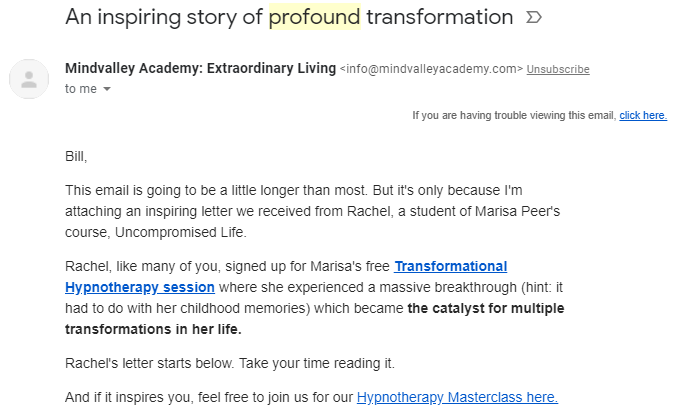Look: You want to make more money from your email list.
A high click-to-open rate (CTOR) can help you do that.
In today’s article, I explain what CTOR is, why it’s important, and how to improve yours. Let’s dive in!
- What Is Click-To-Open Rate (CTOR)?
- CTOR vs. CTR: What’s The Difference & Which Is More Important?
- 5 Tips to Improve Your CTOR
%(tableofcontents)
What Is Click-To-Open Rate (CTOR)?
The click-to-open rate (CTOR) compares the number of people who opened an email to the number who clicked on a link in that email.
CTOR reflects the quality of your email content. A good CTOR means your email copy or offer is convincing enough to get your subscribers to click your email links.
It can be measured with the following equation:
# of Clicks ÷ # of Opens × 100 (to get a percentage) = CTOR
CTOR vs. CTR: What’s The Difference & Which Is More Important?
CTOR shouldn’t be confused with CTR (clickthrough rate). The clickthrough rate shows how many people clicked on an email link out of the total emails sent. The click-to-open rate shows how many people clicked on an email link out of the number of email opens from that mailing, giving an indication of the relevance of the links to the subset of people who read the email.
This can get confusing because, at first glance, a high CTR seems good (and it is). However, it’s possible to have a low CTR but a high CTOR. Let me explain…
Say you have two emails: A and B.
-
Email A has a CTR of 5% and a CTOR of 50%.
-
Email B has a CTR of 10% and a CTOR of 20%.
| Sent |
Open |
Click |
CTR |
CTOR | |
| Email A | 1,000 | 100 | 50 | 5% | 50% |
| Email B | 1,000 | 500 | 100 | 10% | 20% |
If we look purely at CTR, email B is the better email. But since email A has a much higher click-to-open rate, it actually performs better for engaged subscribers than email B.
So if you improve the open rate of email A through a better subject line or sending at a better time, that email should have a much higher CTR than email B.
The problem is that email A just didn’t get opened as much as email B, and if we look purely at CTR, we’re misled as to which email is better for our business.
So how do you improve CTOR? Let’s take a look.
5 Tips to Improve Your CTOR
Now that you understand why CTOR is such an important metric, I bet you want to improve yours. Here are five tips on how to do that.
1. Deliver On Your Subject Line’s Promise
Remember, CTOR is not about improving open rates (although that is certainly important). Rather, it’s about getting people to click your links after they open your email. To do that, you need two things:
-
Good copy and/or media.
-
A good offer.
A great subject line gets you in the door, but unless you follow through on what you promised in the subject line, people will bounce.
For example, take this email we recently sent the Sumo list:

The subject line is “The BEST Abandoned Cart Email.” When you open this email, it shows stats about the issue (abandoned carts) then has a link for you to see how to write the best abandoned cart email, just as the subject line promised.
Here are the stats for that email:

If we calculate CTOR, we get 1,631 ÷ 15,102 × 100 = 10.79%. Not too shabby!
2. Keep It Short & Simple
My next tip is universal across most marketing and copywriting:
KISS. Keep it super simple.
Most of Sumo’s emails are only a few sentences long, with two calls to action to read our content. They make a promise in the subject line, deliver on that promise, and let you get right to what you were looking for when you opened the email.
No fluff, no BS.
Take this email by Benjamin Hardy, for example:

His subject line is just “millionaire.” It’s so open and vague, which makes it intriguing. Who doesn’t want to be a millionaire?
Then, he simply states “Want to become a millionaire? Do these 15 things.”
Genius! It’s short and simple while also delivering on the subject line’s promise as we talked about in tip number one.
Note: Longer emails do have their place. But you need to be good at copywriting and storytelling to pull them off, and they take a lot of time to do well.
3. Give Your Subscribers What They Want
Your subscribers subscribed for a reason. On the surface, that reason might be to get your content upgrade or to get a discount.
But underneath the surface-level stuff, the real reason they signed up was to solve some problem in their life.
Your job is to solve whatever your brand promised to solve.
For example, our content at Sumo helps people become better entrepreneurs and marketers. People may have signed up for our content upgrade on how to improve their click-to-open rates, but the underlying reason they want that is to grow their business and increase their revenue.
The point is this: People are on your list for a reason. Give them more of what they signed up for!
Take this email from Gael Breton with the subject line “We Analyzed Over 1,000,000 Internal Links”, for example:

I joined their email list to get actionable advice on SEO to help me grow my website’s organic traffic. This is actionable advice on SEO that can help me grow my website’s organic traffic. There is no doubt this is what their list wants.
Because it’s what their list wants, more people will open AND click. Better metrics across the board!
Pro Tip: Not sure what your list wants? Look back at your three highest-performing emails in the last 12 months. What were they about? Give your list more of those kinds of emails.
4. Use Power Words In Your Copy
Power words and trigger words work insanely well to convince your subscribers to open, read, click, and buy. And they’re so easy to sprinkle into an email.
Here are a few subject line examples (power words bolded):
-
Give the gift of healthy indulgence
-
Breathtaking views you won’t want to miss
-
Huge SALE: Get up to 50% off
-
The strategy so good it’s forbidden
-
On-demand courses to massively grow your business
-
Life-changing drink you HAVE to try
You get the idea; just sprinkle them in. And not just in your subject line — in your email copy, too.
Here’s an example from Mindvalley Academy (subject line: An inspiring story of profound transformation):

Click here to see the full email.
This email uses loads of power words, from transformational to free and massive breakthrough. They work!
5. Add Buttons To Improve CTR
If you’re on the Sumo email list, you’ve probably noticed we love buttons. We love them so much, in fact, that we use them in every email. Our email list gets a very nice 13.78% CTOR, largely due to this button template.

You can use buttons as a CTA for your articles, for discounts or products, or to send people to landing pages. They’re just so clickable.
To add a button in List Builder, create a new email and click the BUTTON button.

From there, you can edit the button text to say anything you’d like! I recommend using power words in the button copy as well. It’s also good to state the benefit, such as “Learn XYZ” or “Get the Discount.” Make it actionable.
Get My Email Metric Swipe File
Want to start improving your email list’s engagement and ROI beyond CTOR?
Click the button below to get my email marketing metric swipe file, with a list of other important email metrics and how to improve them!
Add A Comment
VIEW THE COMMENTS